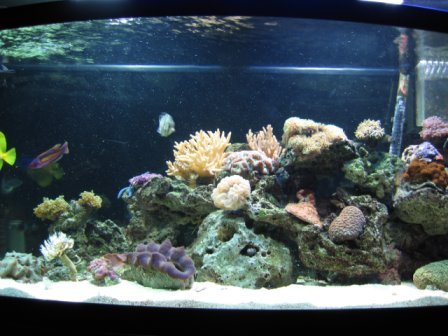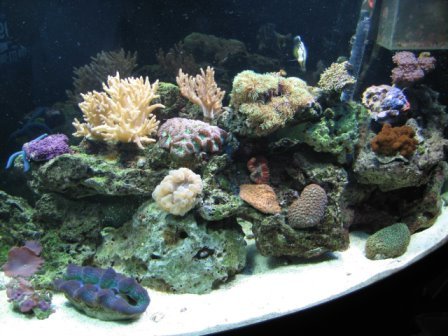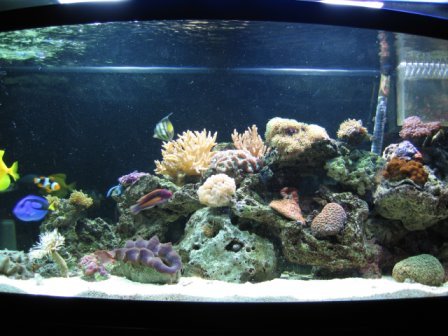larrynyc2000
Aquarium Advice Newbie
- Joined
- Feb 12, 2006
- Messages
- 2
hi everyone!
i'm new to the site and somewhat new to reef building ... i'm an experienced diver and i have always wanted to create a small replication of what i see down there right in the middle of my office to make work a little less dull ... so i got a 72G bow as a gift last year (and i don't really love the bow, but i'm kinda stuck with it for now) and i've been messing around with it for 6 months ... and i spent a lot of time aquascaping my rock formations to build a reef with a lot of "shelves" ... but now that i'm adding corals to it, i kinda feel like i didn't set it up correctly to begin with.
anyway, i'm also in the process of introducing a huge 8" anenome with a family of true percs and i want to get all the corals out for that anyway so they dont get mushed by the anenome while he tries to find a home ... so while the corals are out, i am thinking of re-scaping the rock ...
"why?" you might ask ... well, i kinda feel like while the rock formation is cool, i feel like it doesnt have enough slope to it and i feel like i will never be able to cover up all the exposed rock with corals ... i don't know if i'm over-thinking this, but i kinda think that i need either some validation or advice as to how to set up the rock
some things i'm hoping to do include:
- have the right side slope high up so some corals can be positioned in front of the filter
- leaving a sandy area on the left for feather dusters and clams
- and i'm hoping the anenome makes his home on left side
this can all change based on where the anenome desides to reside ... but i still think i need some advice ... a few pictures are included below with my tank as it is now
any advice on how / where to position corals would be appreciated as well
thanks in advance!!!
i'm new to the site and somewhat new to reef building ... i'm an experienced diver and i have always wanted to create a small replication of what i see down there right in the middle of my office to make work a little less dull ... so i got a 72G bow as a gift last year (and i don't really love the bow, but i'm kinda stuck with it for now) and i've been messing around with it for 6 months ... and i spent a lot of time aquascaping my rock formations to build a reef with a lot of "shelves" ... but now that i'm adding corals to it, i kinda feel like i didn't set it up correctly to begin with.
anyway, i'm also in the process of introducing a huge 8" anenome with a family of true percs and i want to get all the corals out for that anyway so they dont get mushed by the anenome while he tries to find a home ... so while the corals are out, i am thinking of re-scaping the rock ...
"why?" you might ask ... well, i kinda feel like while the rock formation is cool, i feel like it doesnt have enough slope to it and i feel like i will never be able to cover up all the exposed rock with corals ... i don't know if i'm over-thinking this, but i kinda think that i need either some validation or advice as to how to set up the rock
some things i'm hoping to do include:
- have the right side slope high up so some corals can be positioned in front of the filter
- leaving a sandy area on the left for feather dusters and clams
- and i'm hoping the anenome makes his home on left side
this can all change based on where the anenome desides to reside ... but i still think i need some advice ... a few pictures are included below with my tank as it is now
any advice on how / where to position corals would be appreciated as well
thanks in advance!!!



